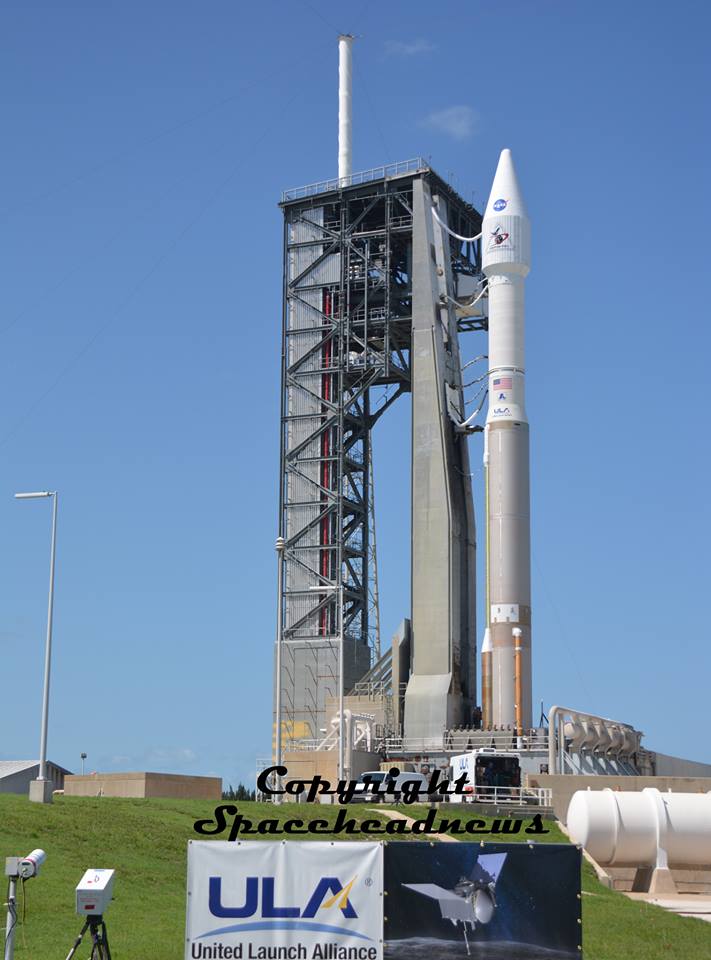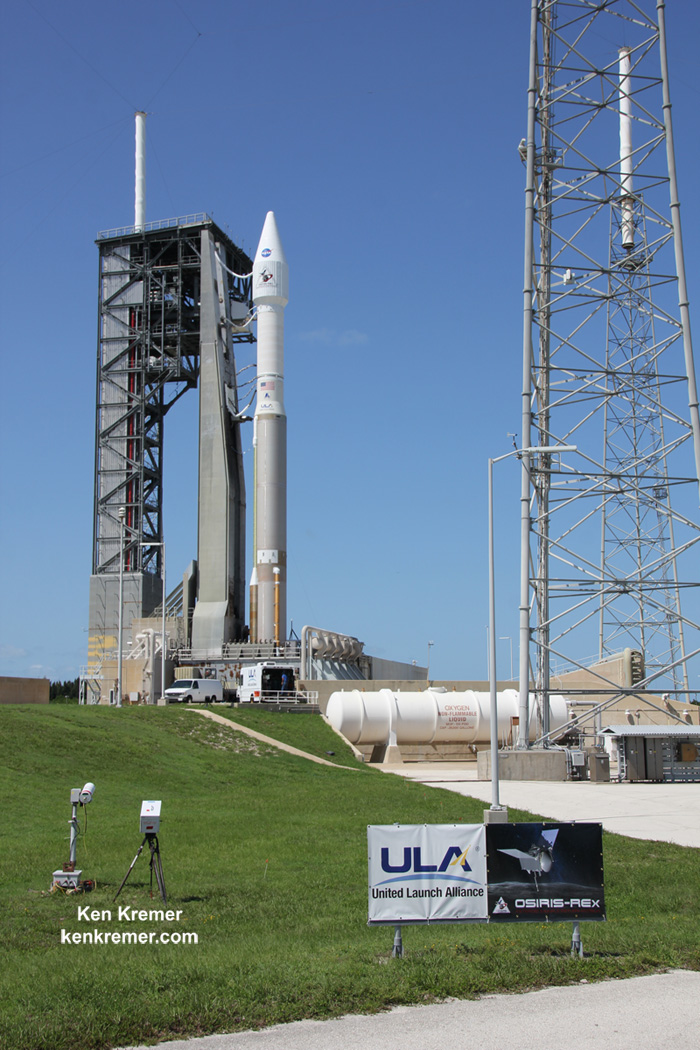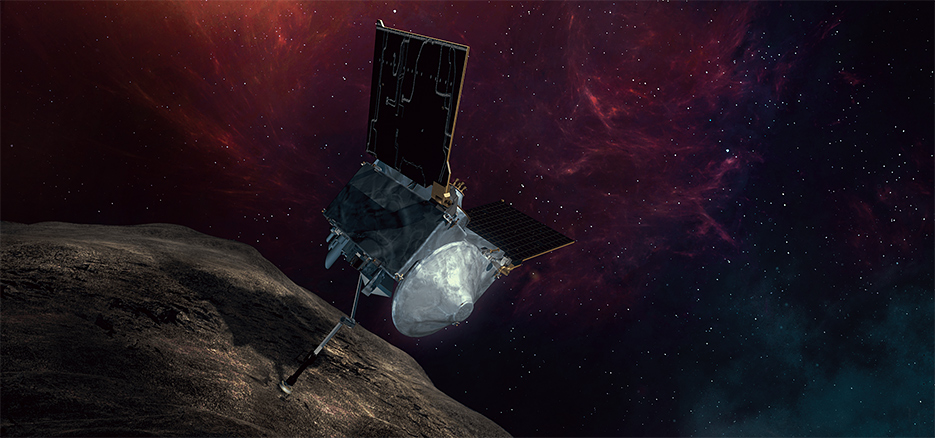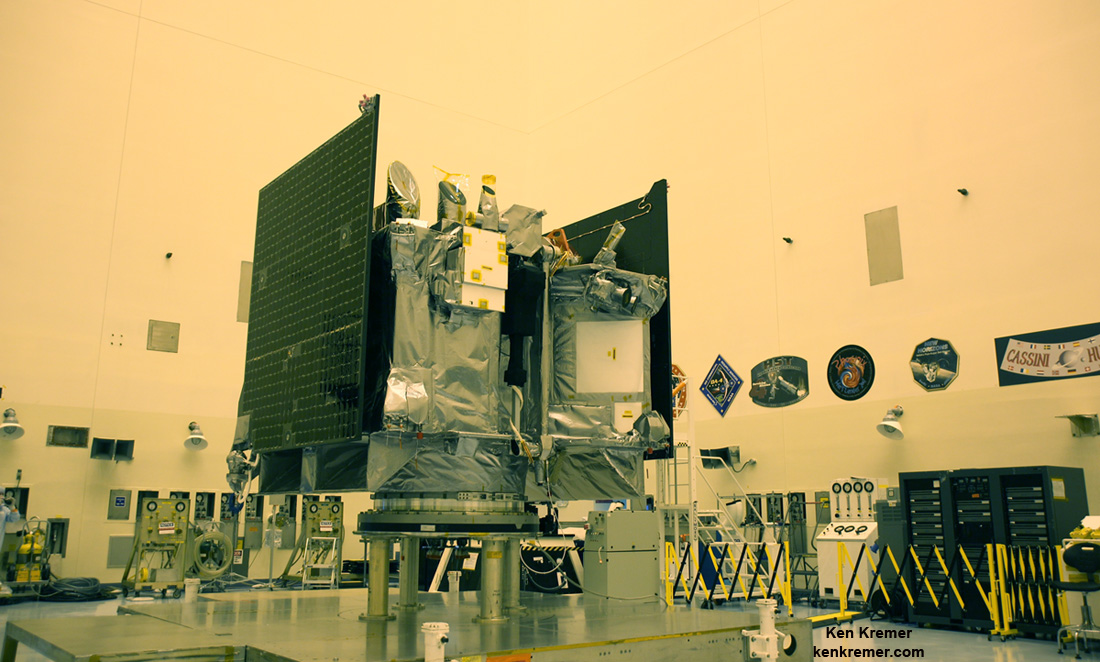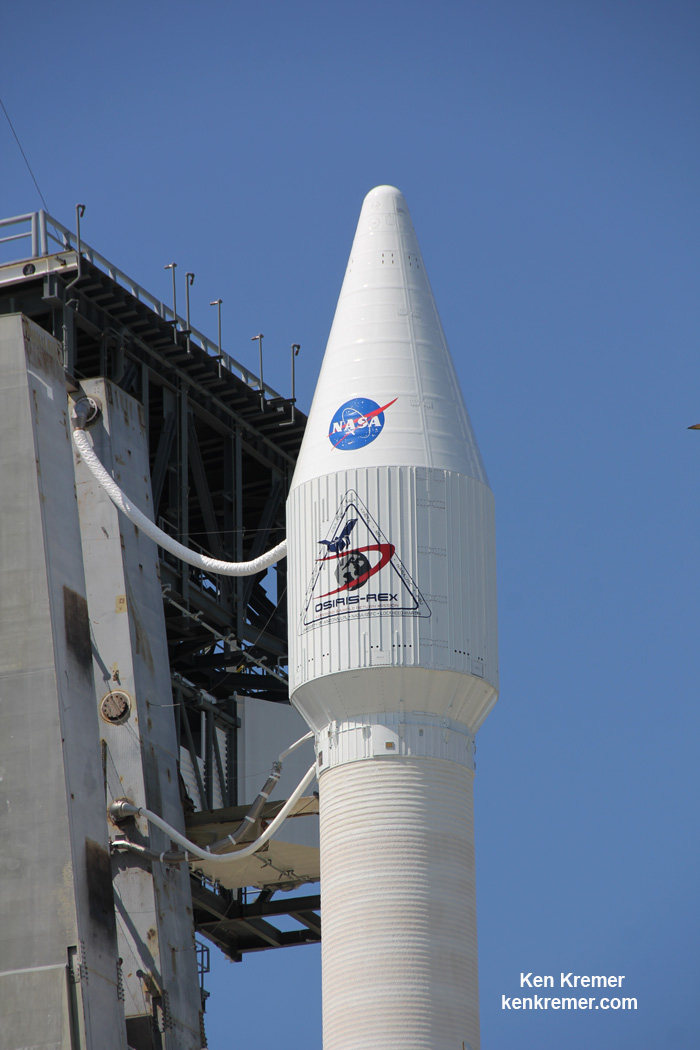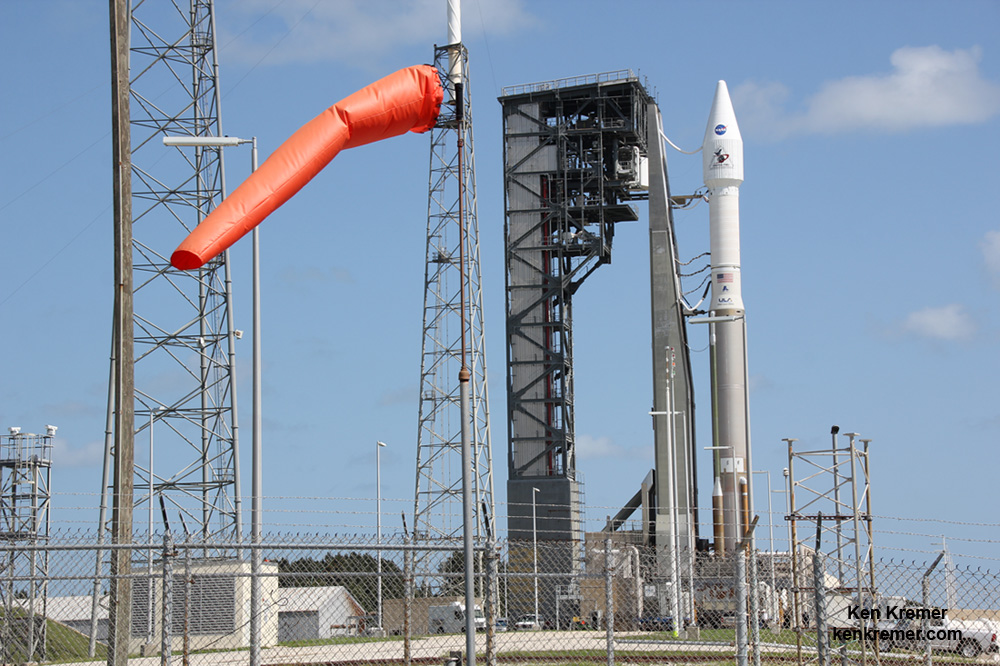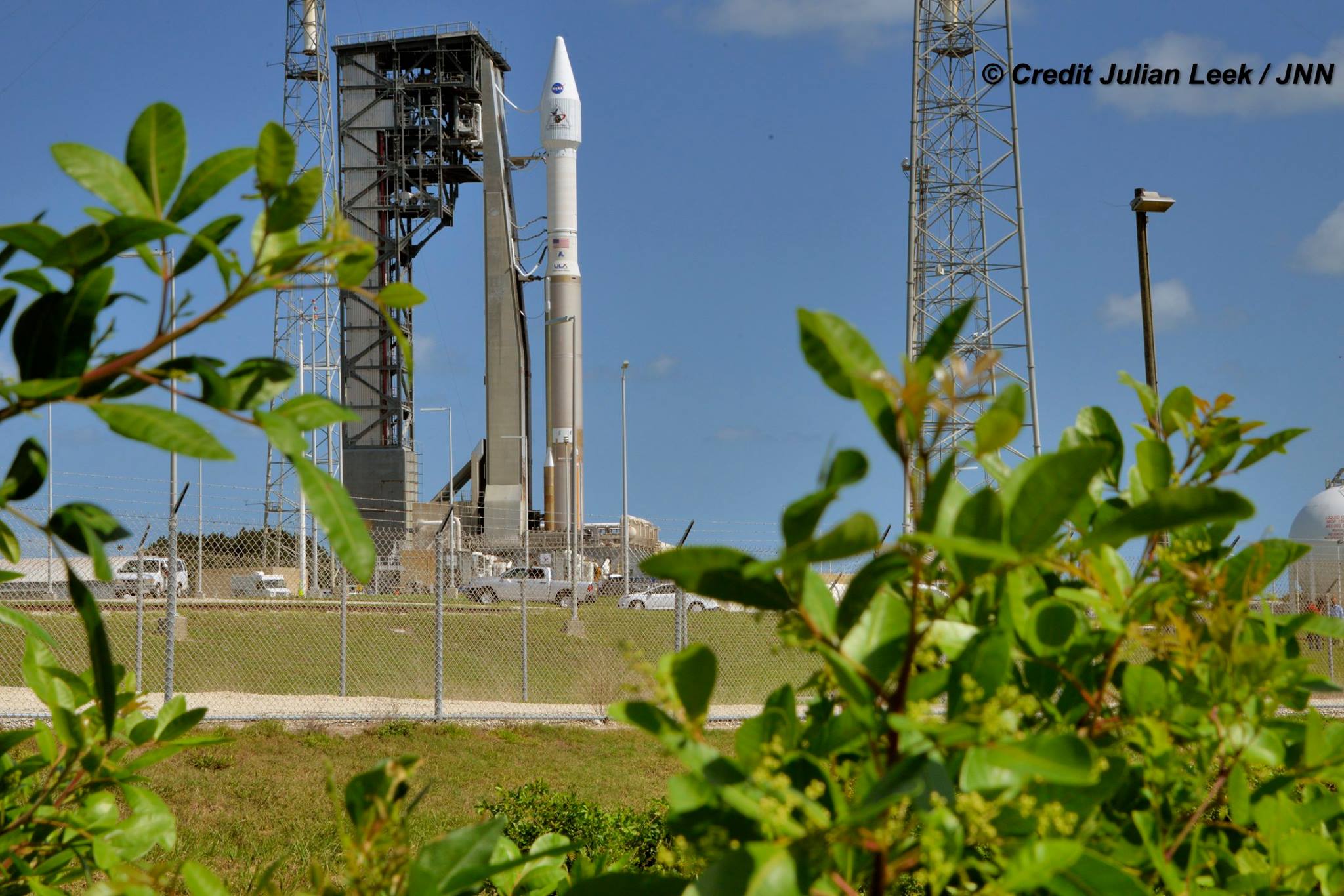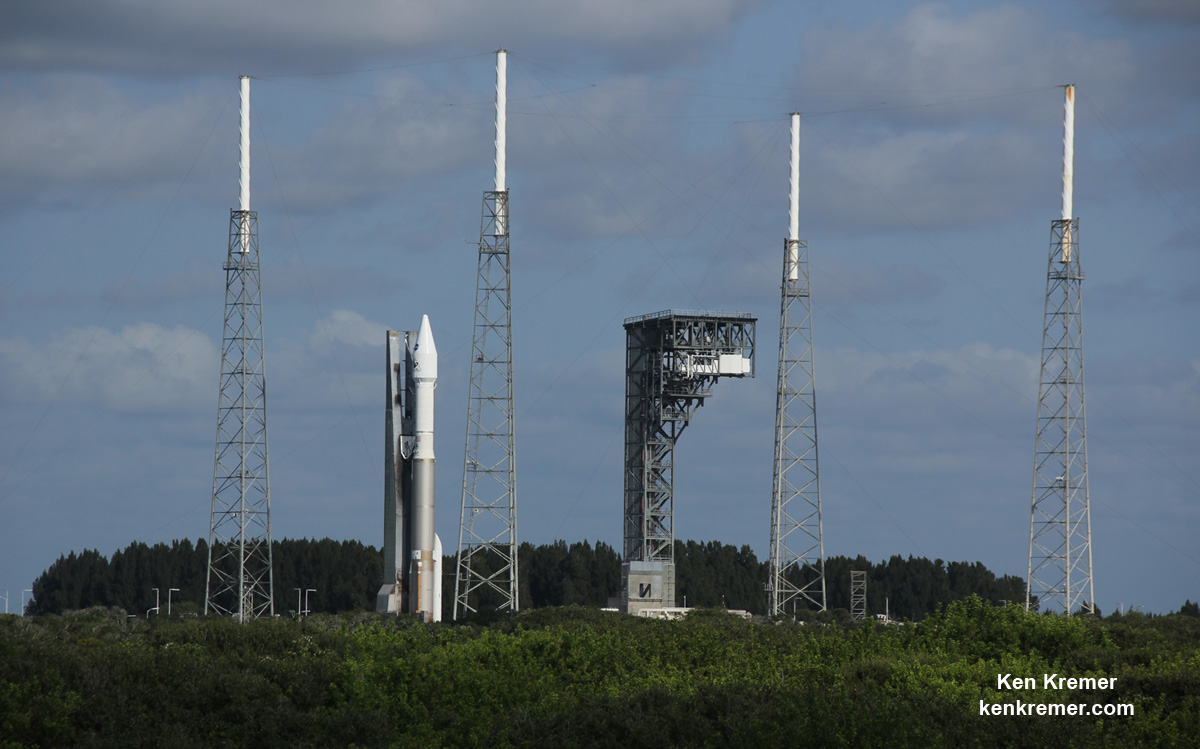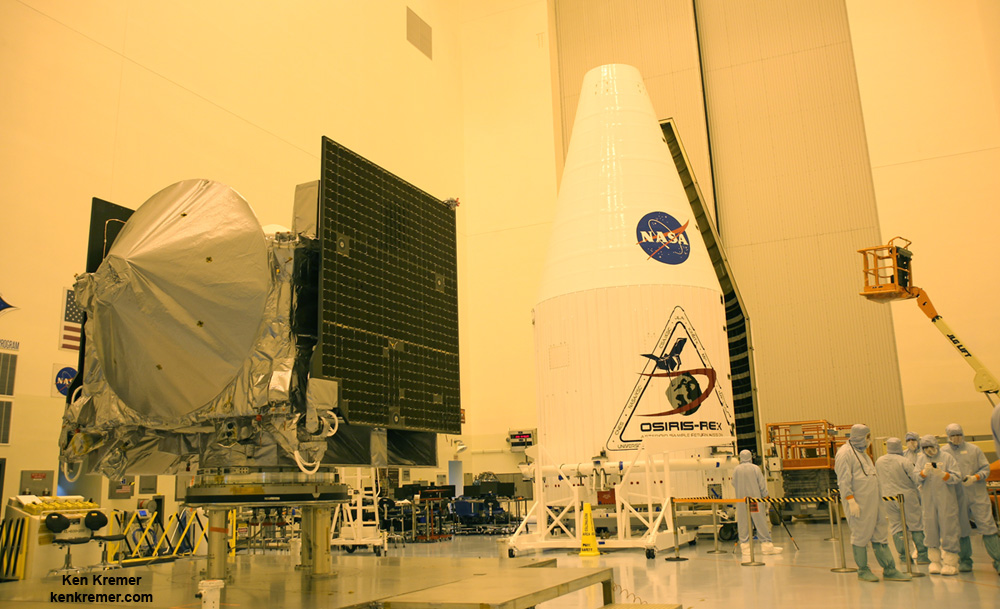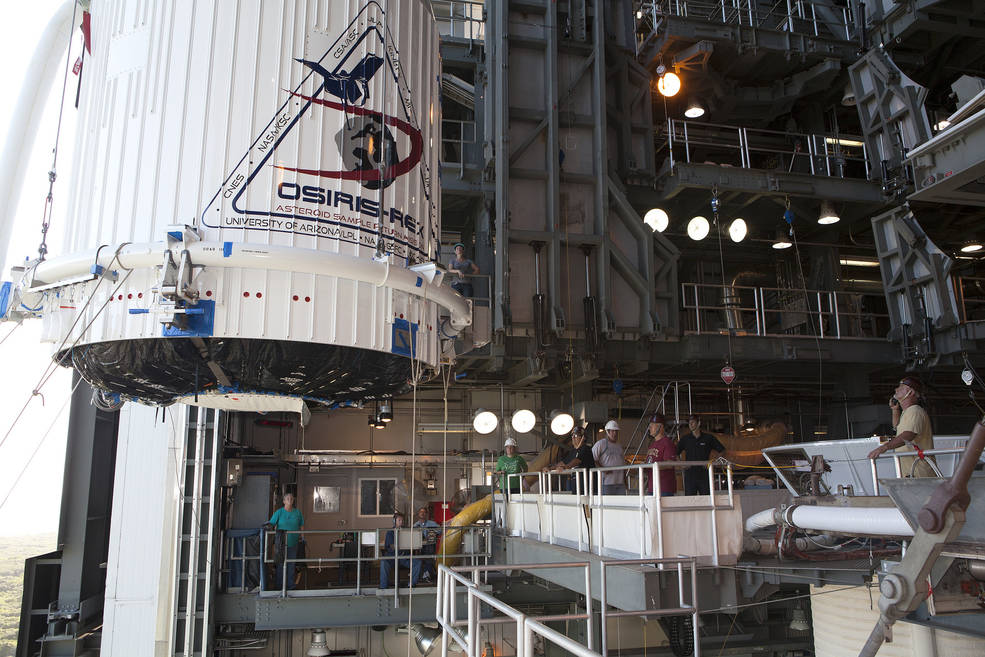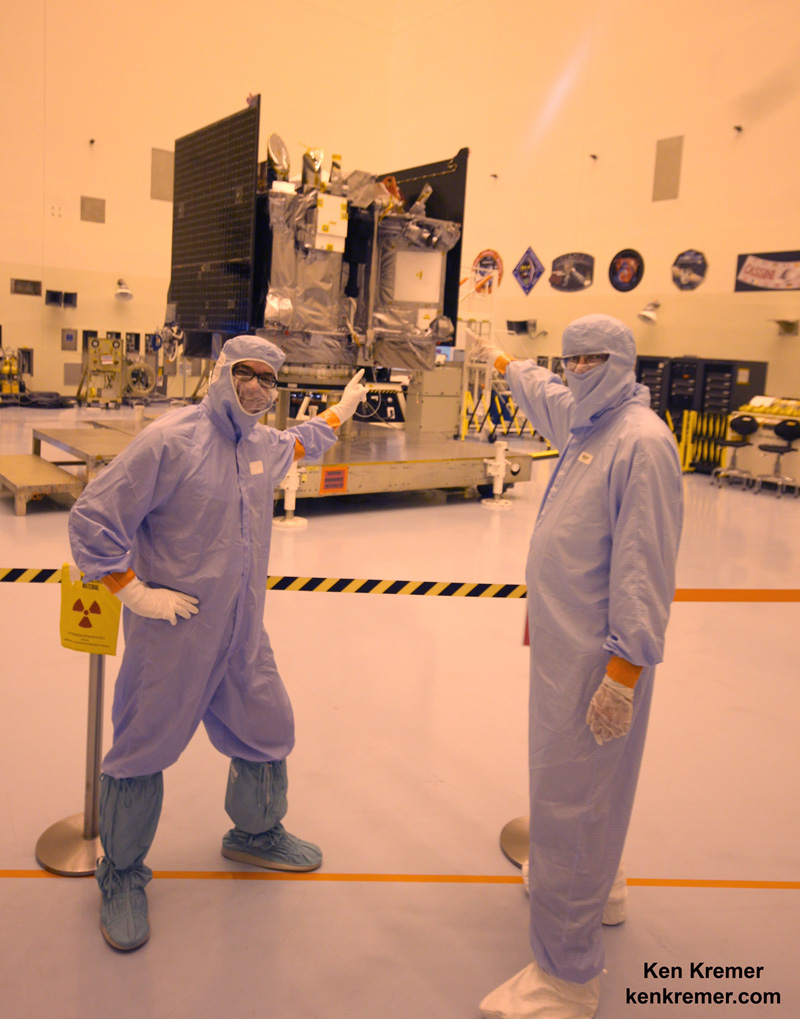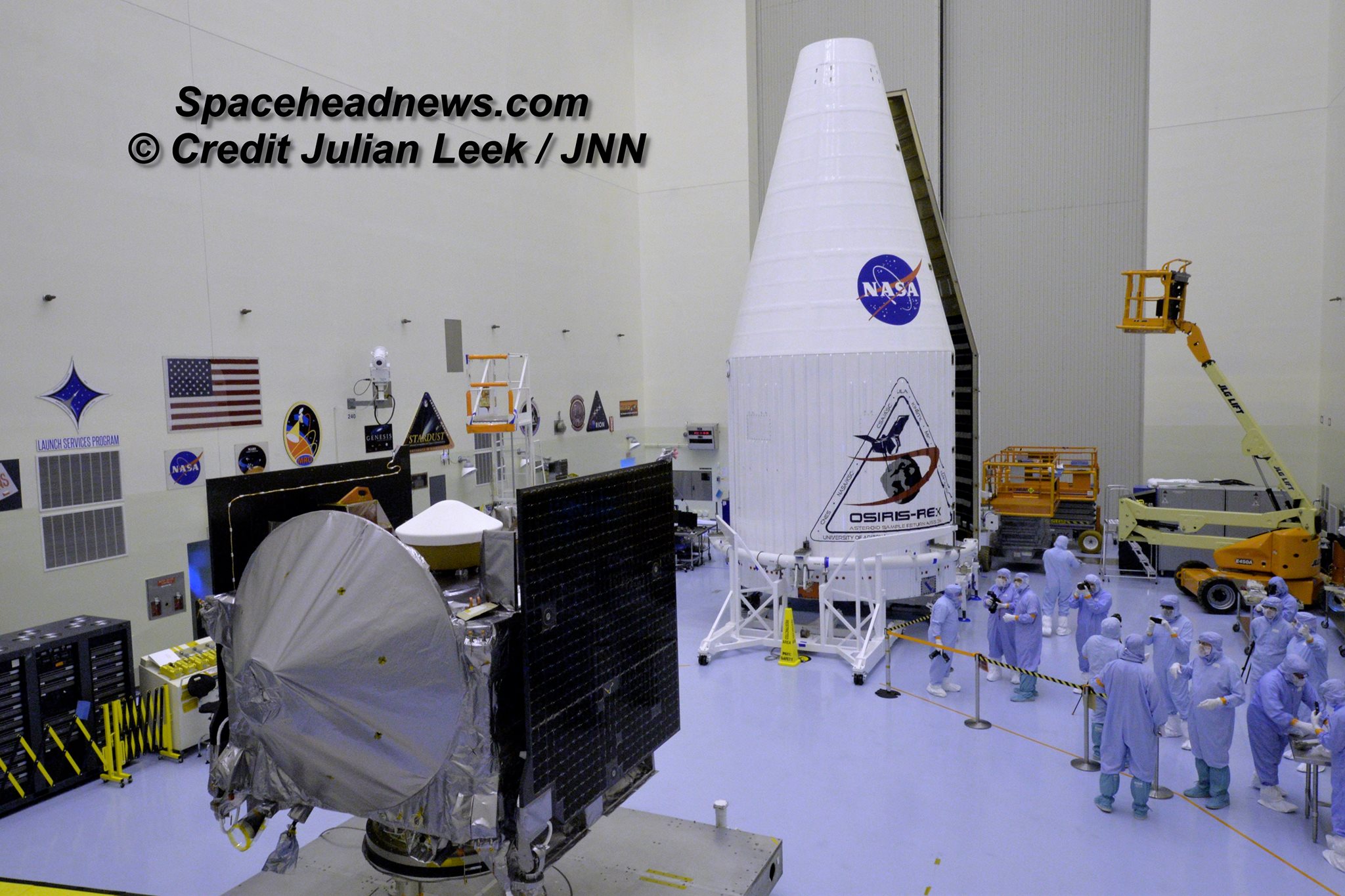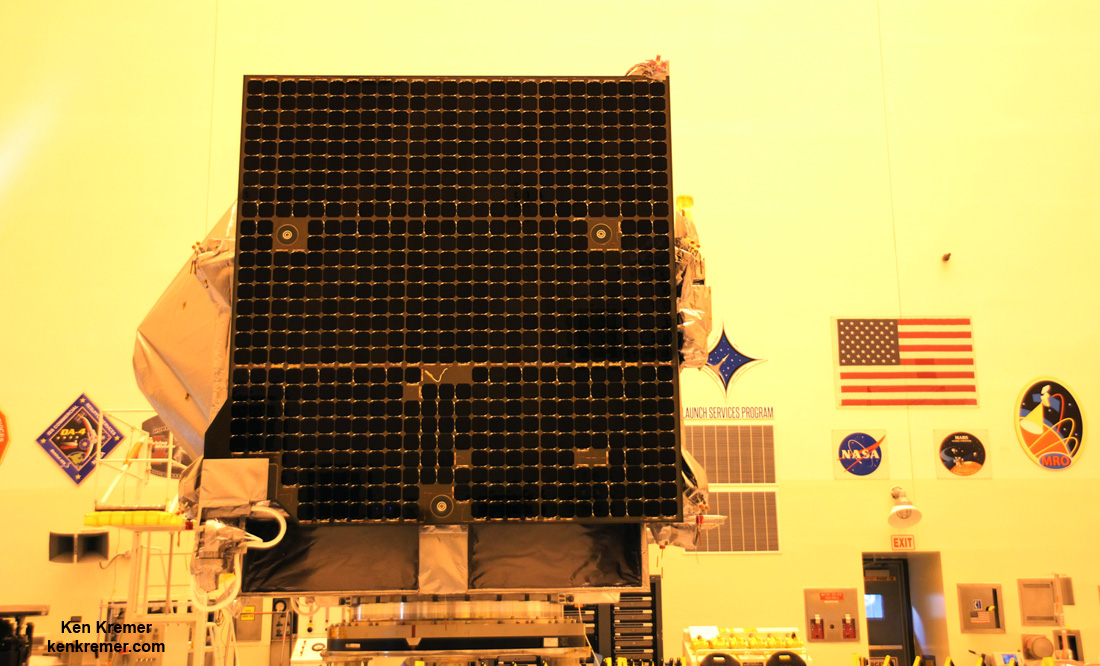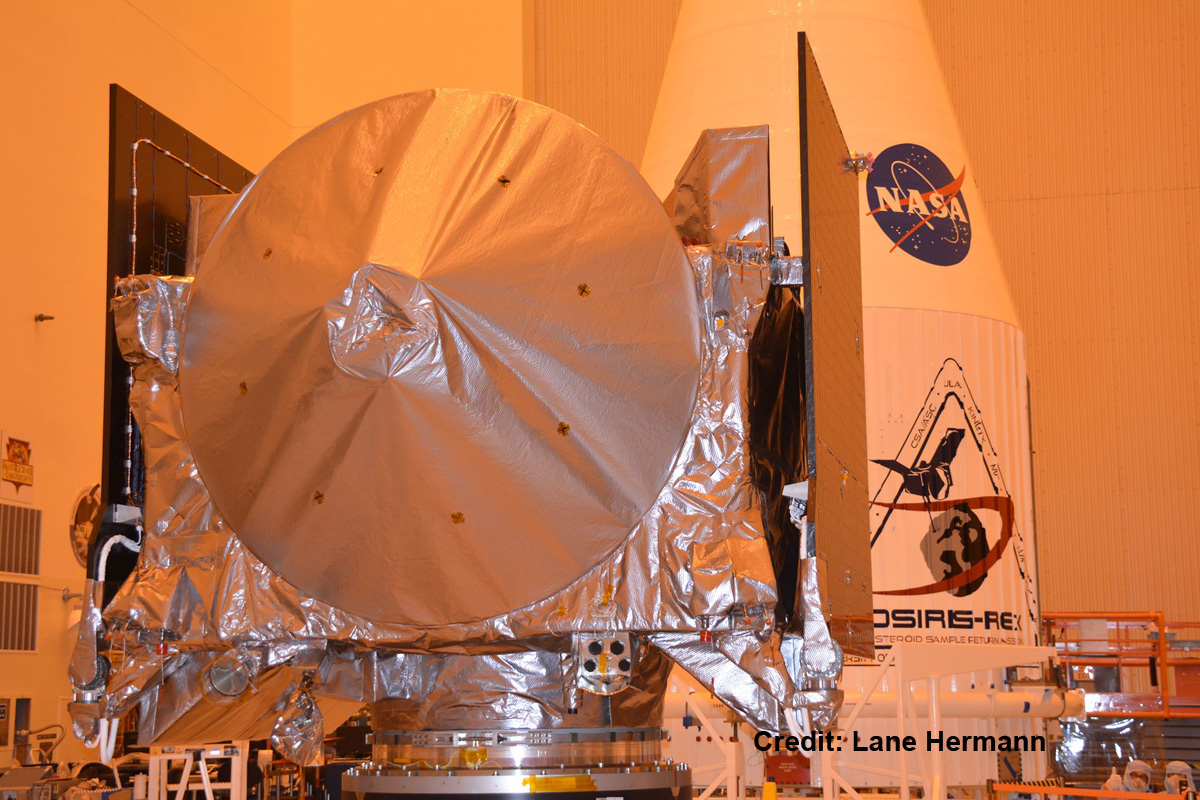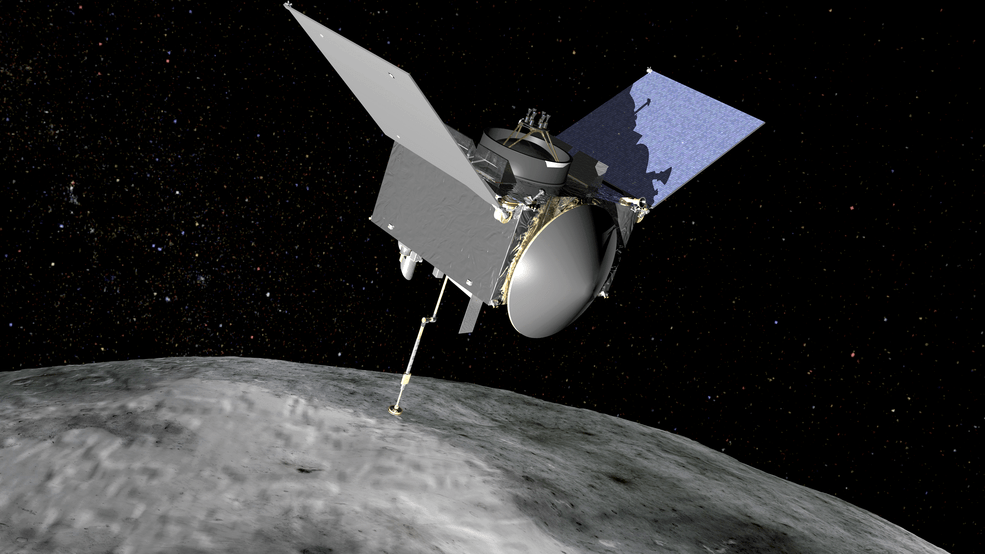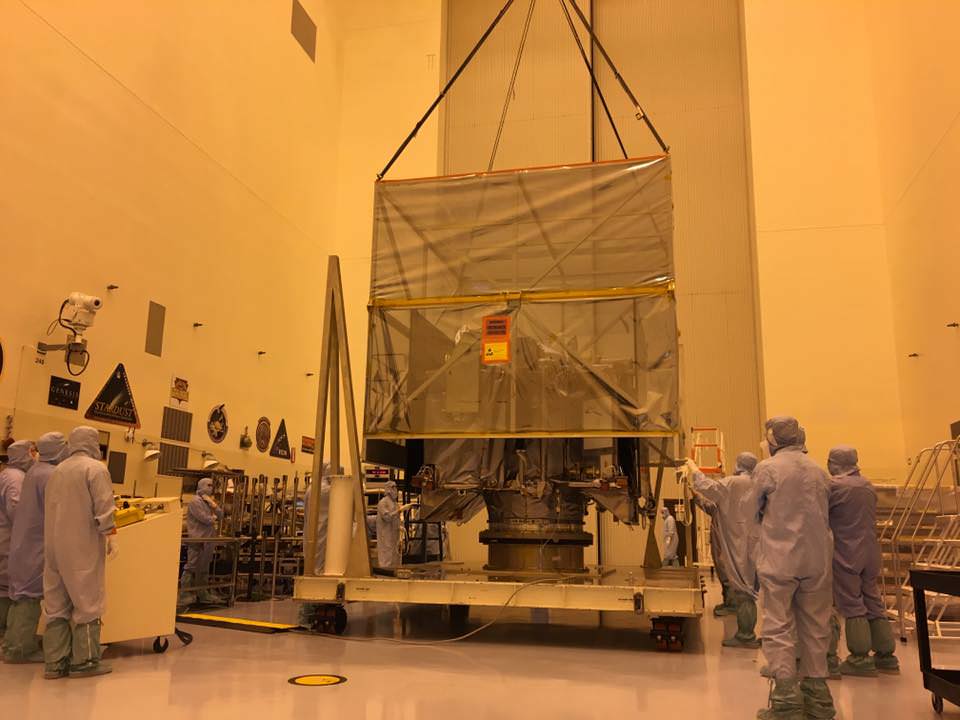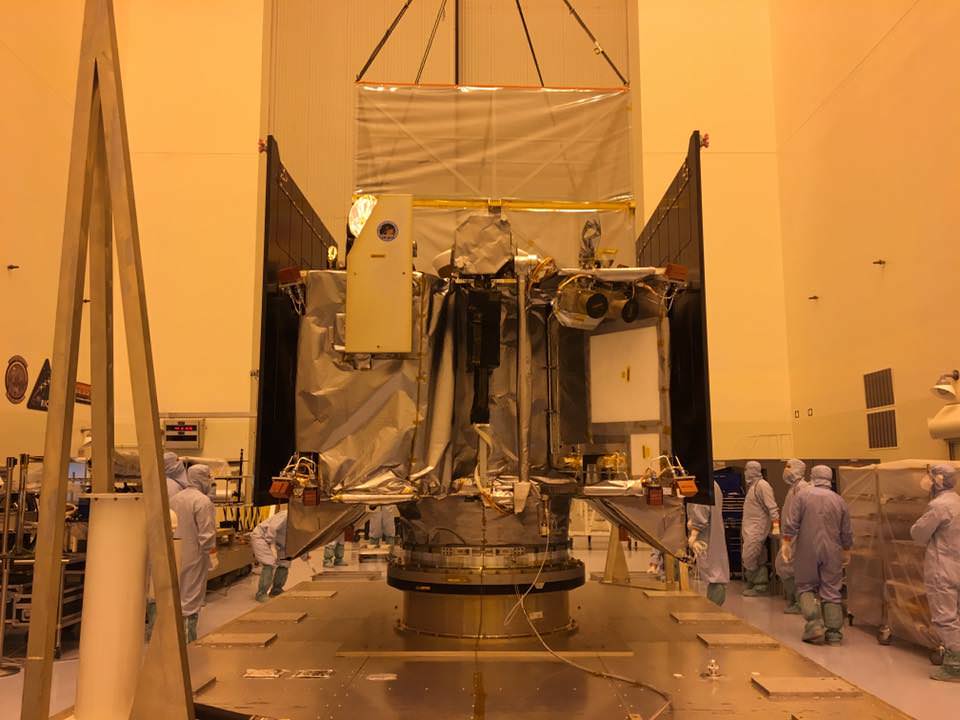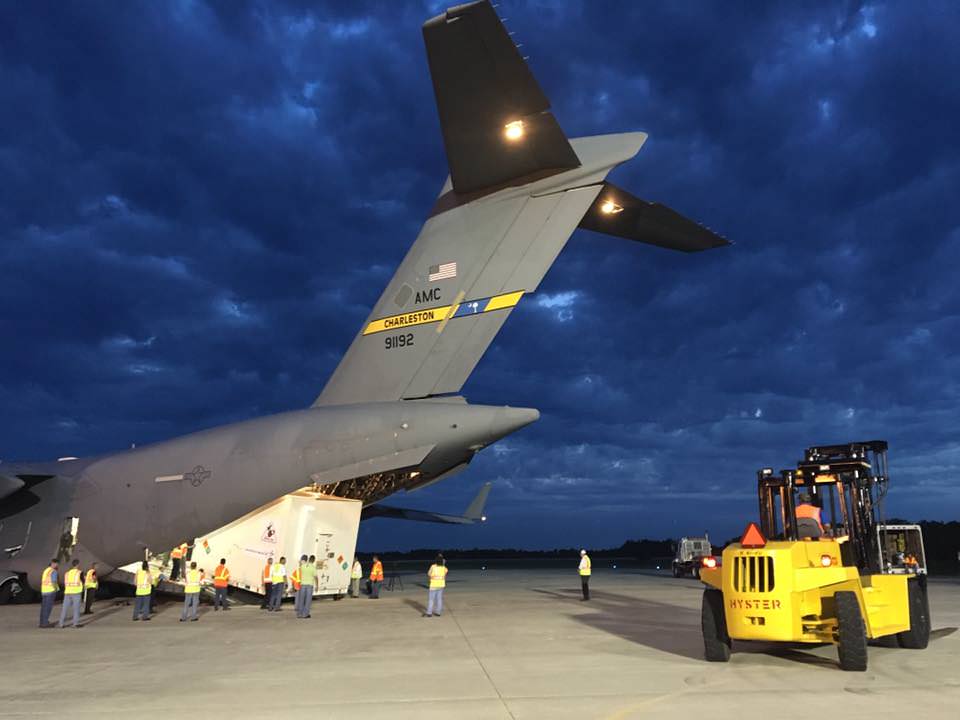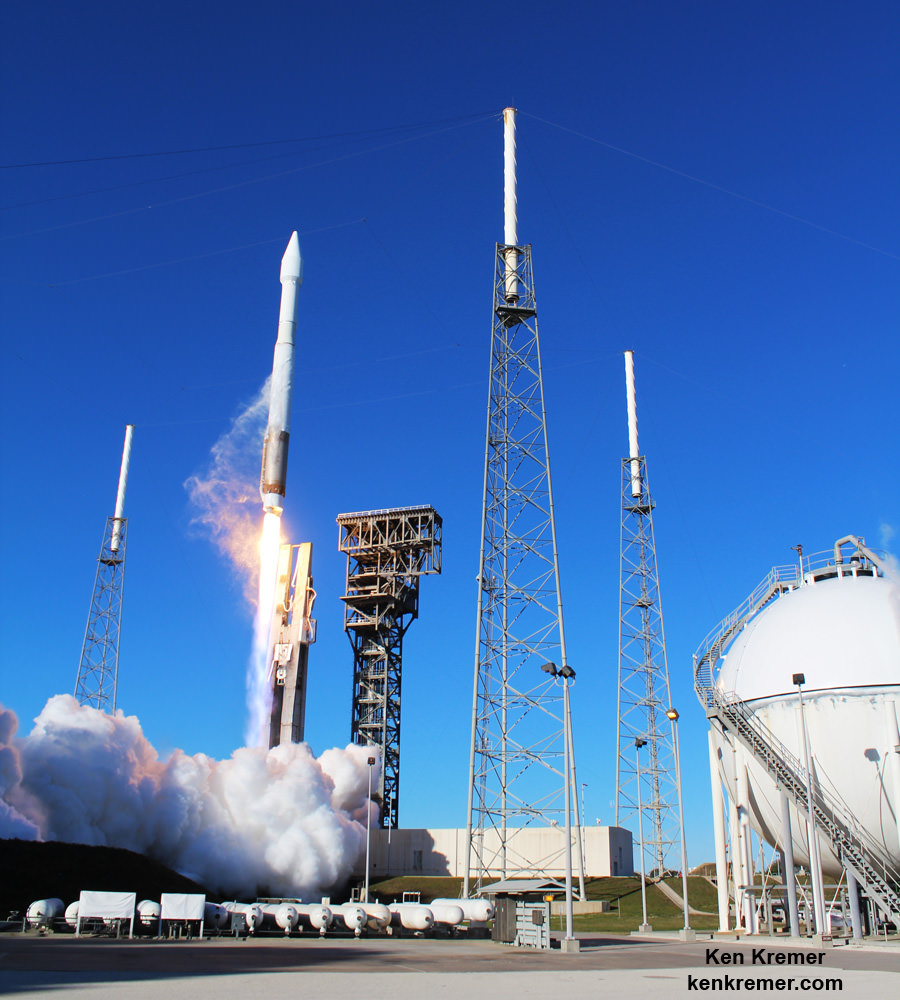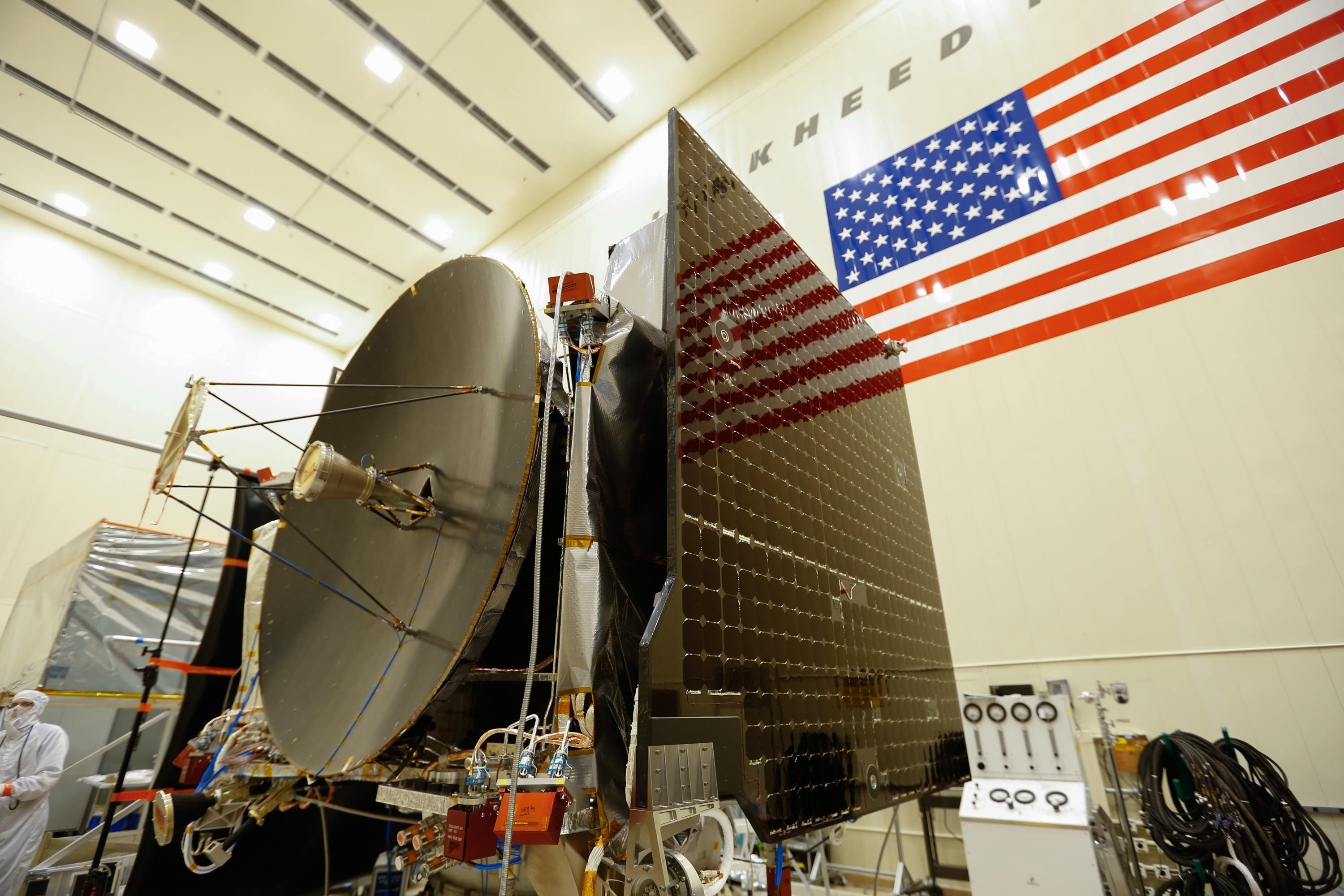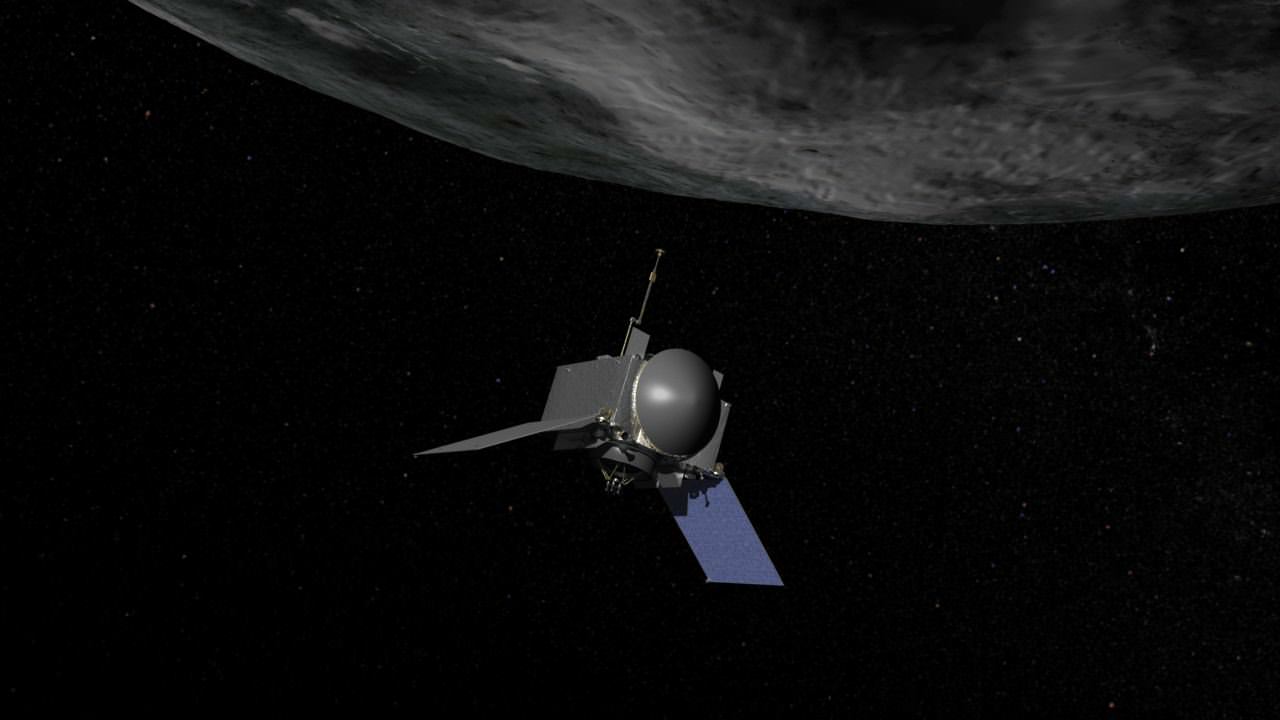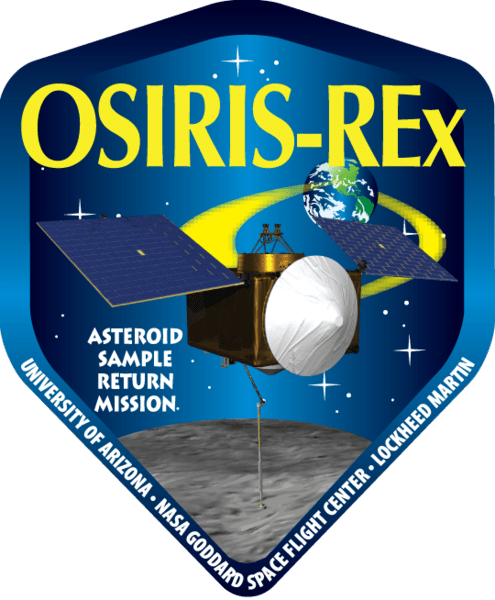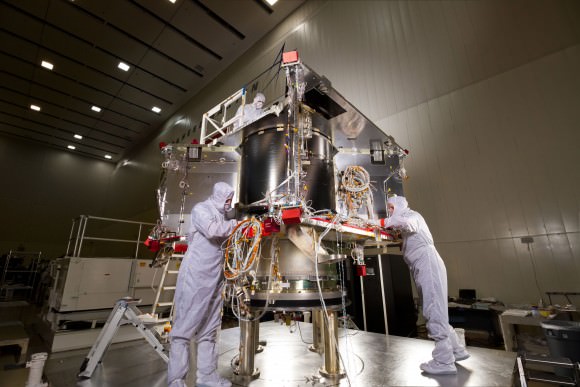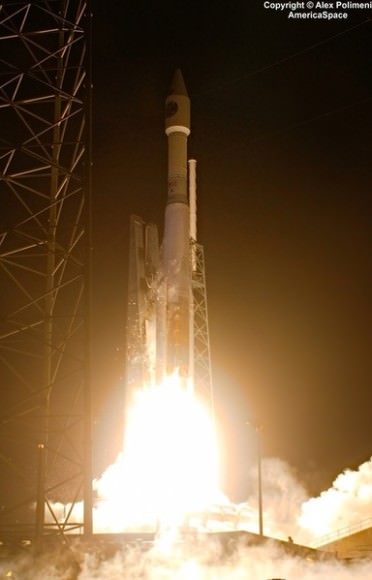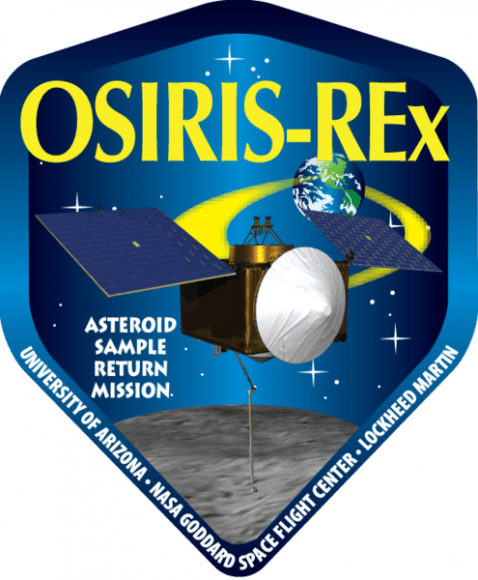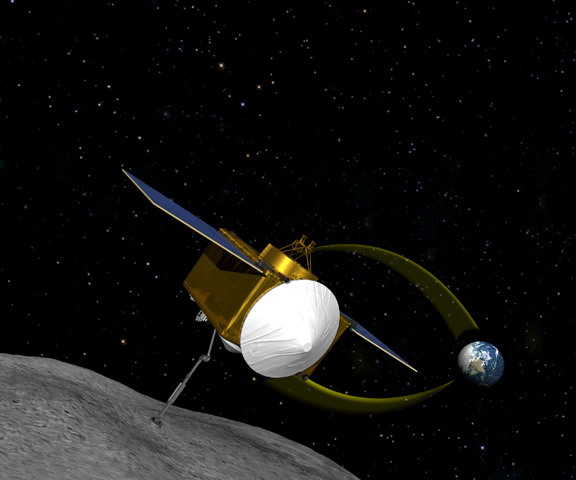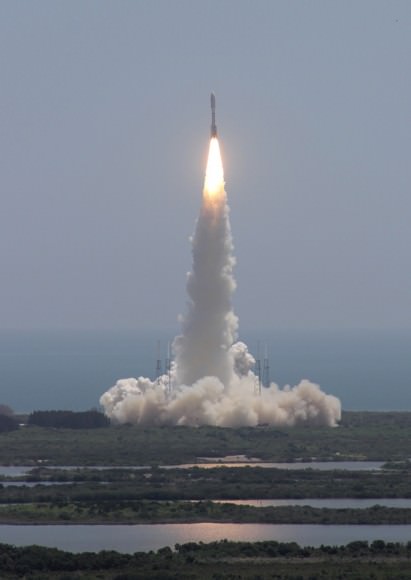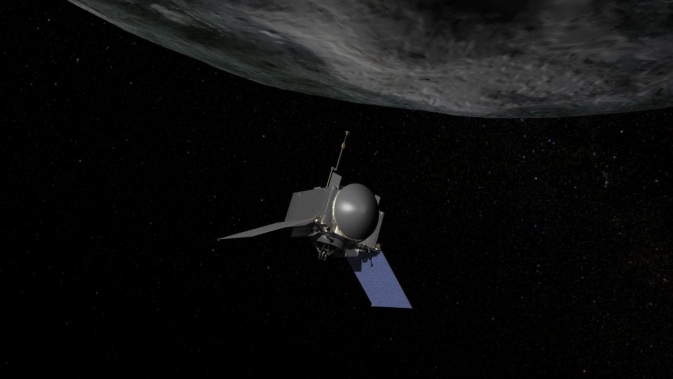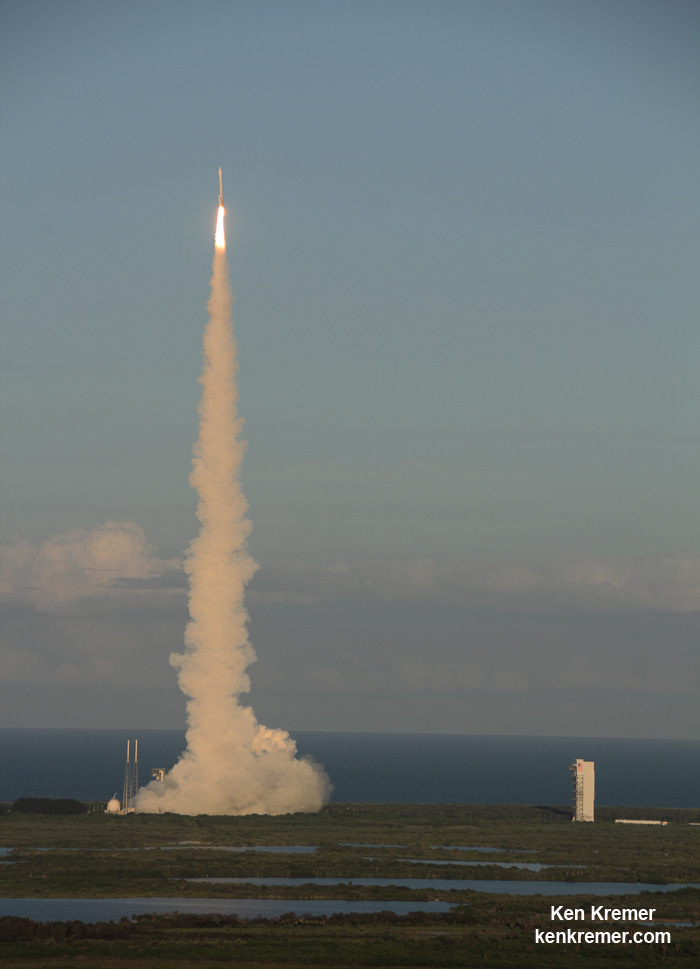
KENNEDY SPACE CENTER, FL – NASA’s OSIRIS-REx hi tech robotic explorer blasted off this evening in spectacular fashion from the Florida Space Coast on a ground breaking 7 year sampling trek to Asteroid Bennu and back to gather grains of 4.5 billion year old alien sand that could potentially reveal significant answers to the origins of life on Earth.
The Earth departure for NASA’s Origins, Spectral Interpretation, Resource Identification, Security – Regolith Explorer (OSIRIS-REx) spacecraft began with an on time engine ignition from Space Launch Complex 41 at Cape Canaveral Air Force Station on a United Launch Alliance Atlas V rocket shortly before a crystal clear sunset this evening, Thursday, September 8 at 7:05 p.m. EDT.
The Atlas V rocket with OSIRIS-Rex bolted on top roared off launch pad 41 and shot straight up into the sun drenched skies of the sunshine state.
The launch wowed hordes of excited spectators who gathered from near and far to witness America’s first mission to gather pristine samples of soil and rock from Bennu’s coal black and carbon rich surface – and eventually return them to Earth for analysis using the most powerful science instruments humankind has invented.
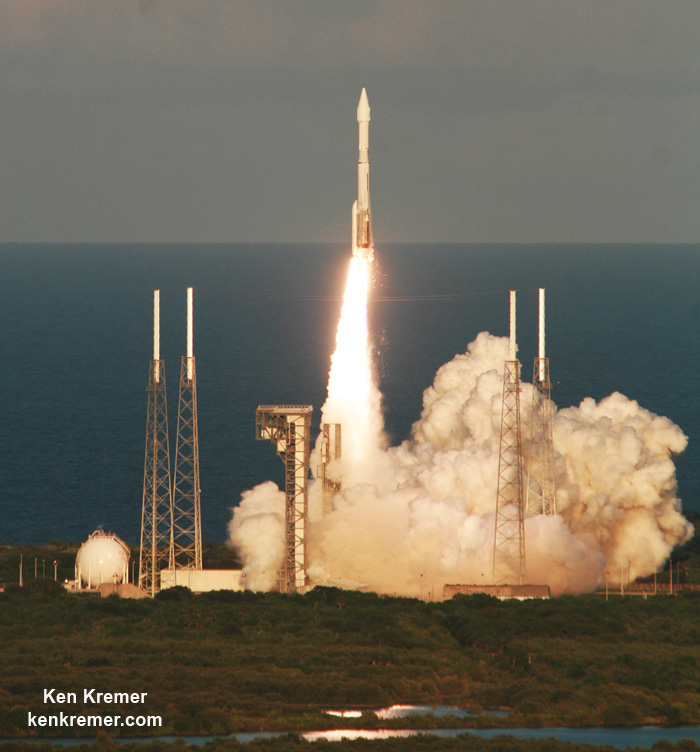
“This represents the hopes and dreams and blood, sweat and tears of thousands of people who have been working on this for years,” said Dante Lauretta, the principal investigator for OSIRIS-REx at the University of Arizona.
“I can’t tell you how thrilled I was this evening, thinking of the people who played a part in this.”
OSIRIS-Rex is on a totally unique 4.5 billion mile roundtrip mission to unlock the mysteries of the formation of our Solar System 4.5 Billion years ago and ourselves as Earth evolved over time.
“Today, we celebrate a huge milestone for this remarkable mission, and for this mission team,” said NASA Administrator Charles Bolden, in a statement.
“We’re very excited about what this mission can tell us about the origin of our solar system, and we celebrate the bigger picture of science that is helping us make discoveries and accomplish milestones that might have been science fiction yesterday, but are science facts today.”
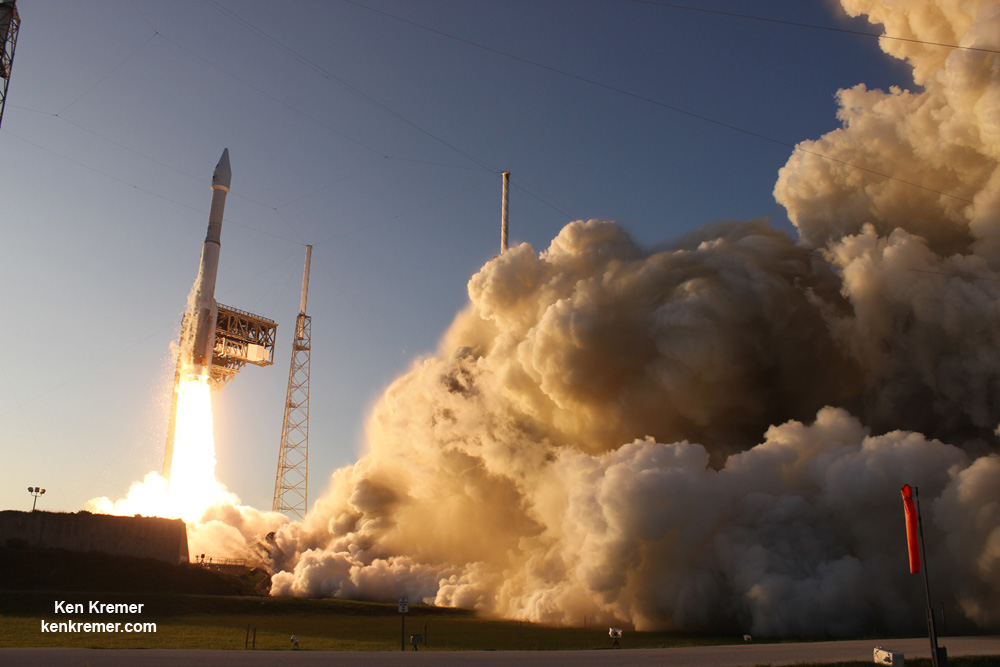
101955 Bennu is a near Earth asteroid discovered in 1999. It was selected specifically as the sampling because it is a carbon-rich asteroid.
It will take about 2 years for OSIRIS-Rex to reach Bennu in 2018 following a flyby of Earth in 2017.
While orbiting Bennu starting in 2018 it will move in close explore Bennu for about two years with its suite of science instruments. After a thorough site selection, it will move carefully towards the surface and extend the 11 foot long TAGSAM robotic arm and snatch pristine soil samples containing organic materials from the surface using the TAGSAM collection dish. The dish will then be placed inside the Earth return canister and be brought back to Earth for study by researchers using all of the most sophisticated science instruments available to humankind.
The asteroid is 1,614-foot (500 m) in diameter and crosses Earth’s orbit around the sun every six years.
Using the 11 foot long TAGSAM robotic arm that functions somewhat like a pogo stick, OSIRIS-REx will gather rocks and soil and bring at least a 60-gram (2.1-ounce) sample back to Earth in 2023. It has the capacity to scoop up to about 2 kg or more.

The two stage ULA Atlas V performed flawlessly and delivered OSIRIS-Rex into a hyperbolic trajectory away from Earth.
The 189 foot tall ULA Atlas V rocket launched in the rare 411 configuration for only the 3rd time on this mission – which is the 65th for the Atlas V.
The Atlas 411 vehicle includes a 4-meter diameter large Payload Fairing (PLF) and one solid rocket booster that augments the first stage. The Atlas booster for this mission is powered by the RD AMROSS RD-180 engine and the Centaur upper stage was powered by the Aerojet Rocketdyne RL10A.
The RD-180 burns RP-1 (Rocket Propellant-1 or highly purified kerosene) and liquid oxygen and delivers 860,200 lb of thrust at sea level.
The strap on solid delivers approximately 348,500 pounds of thrust.
The Centaur delivers 22,230 lbf of thrust and burns liquid oxygen and liquid hydrogen.
The solid was jettisoned at 139 seconds after liftoff.
This is ULA’s eighth launch in 2016 and the 111th successful launch since the company was formed in December 2006.
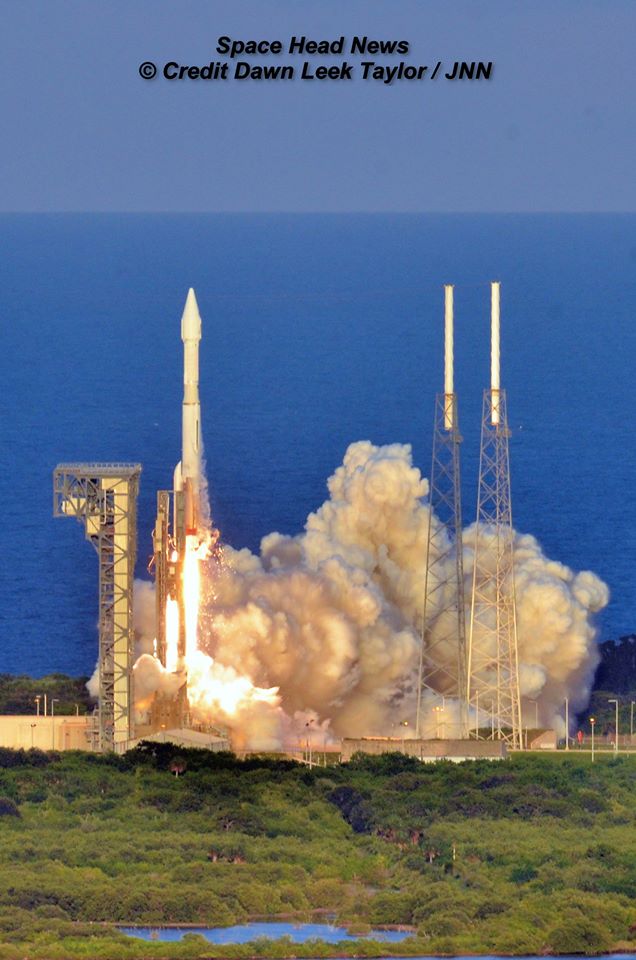
OSIRIS-REx will return the largest sample from space since the American and Soviet Union’s moon landing missions of the 1970s.
OSIRIS-REx is the third mission in NASA’s New Frontiers Program, following New Horizons to Pluto and Juno to Jupiter, which also launched on Atlas V rockets.
NASA’s Goddard Space Flight Center in Greenbelt, Maryland, is responsible for overall mission management.
OSIRIS-REx complements NASA’s Asteroid Initiative – including the Asteroid Redirect Mission (ARM) which is a robotic spacecraft mission aimed at capturing a surface boulder from a different near-Earth asteroid and moving it into a stable lunar orbit for eventual up close sample collection by astronauts launched in NASA’s new Orion spacecraft. Orion will launch atop NASA’s new SLS heavy lift booster concurrently under development.
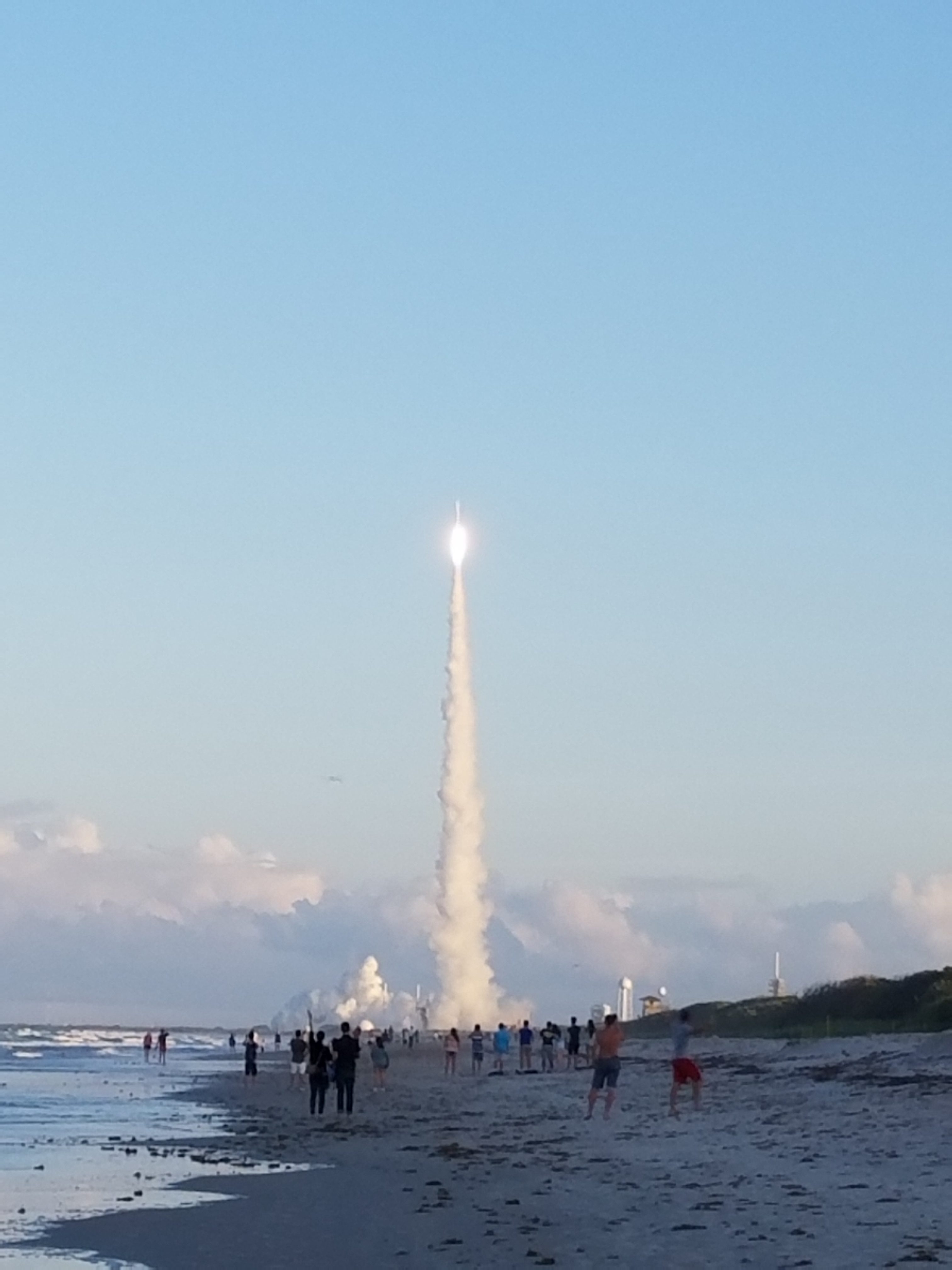
Watch for Ken’s continuing OSIRIS-REx mission and launch reporting from on site at the Kennedy Space Center and Cape Canaveral Air Force Station, FL.
Stay tuned here for Ken’s continuing Earth and planetary science and human spaceflight news.
